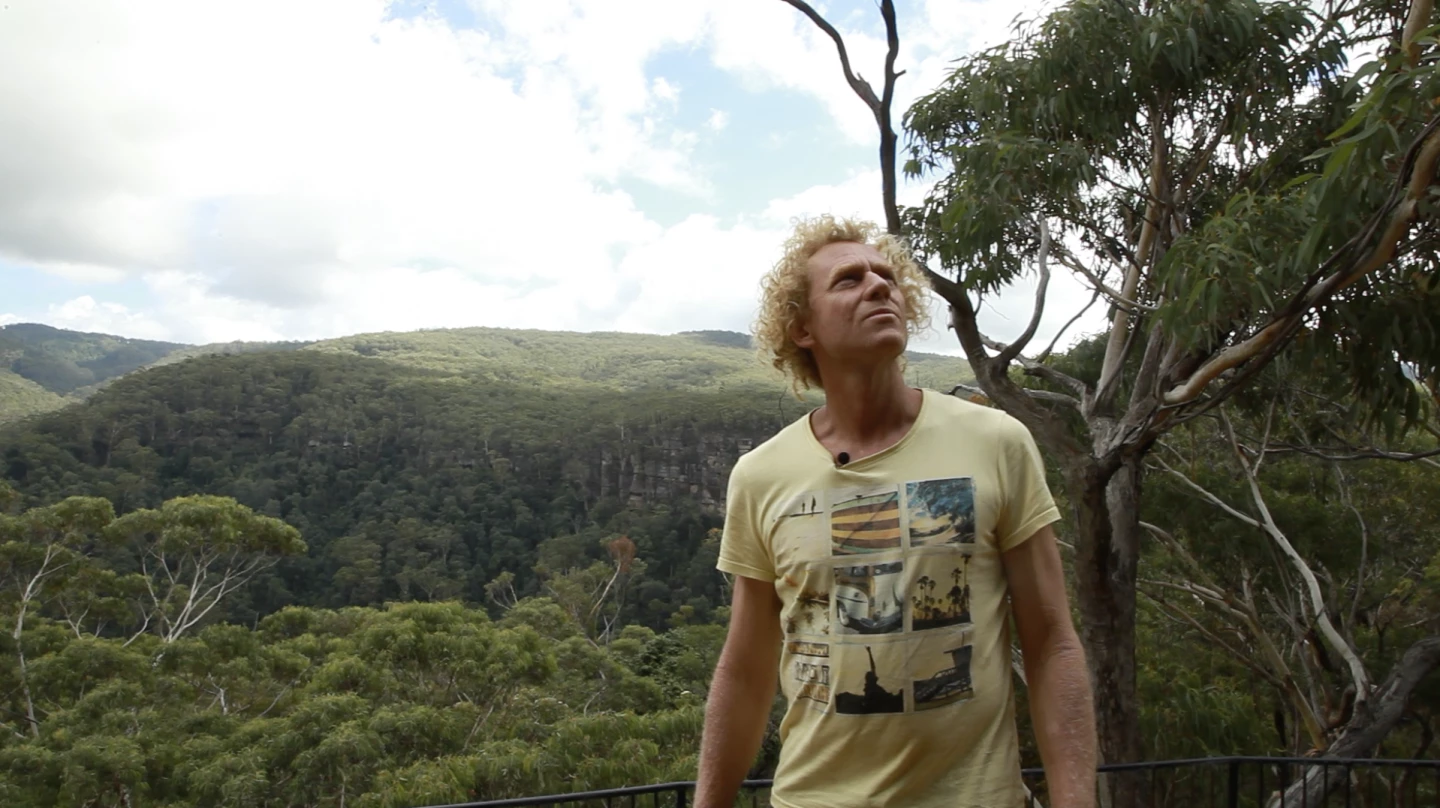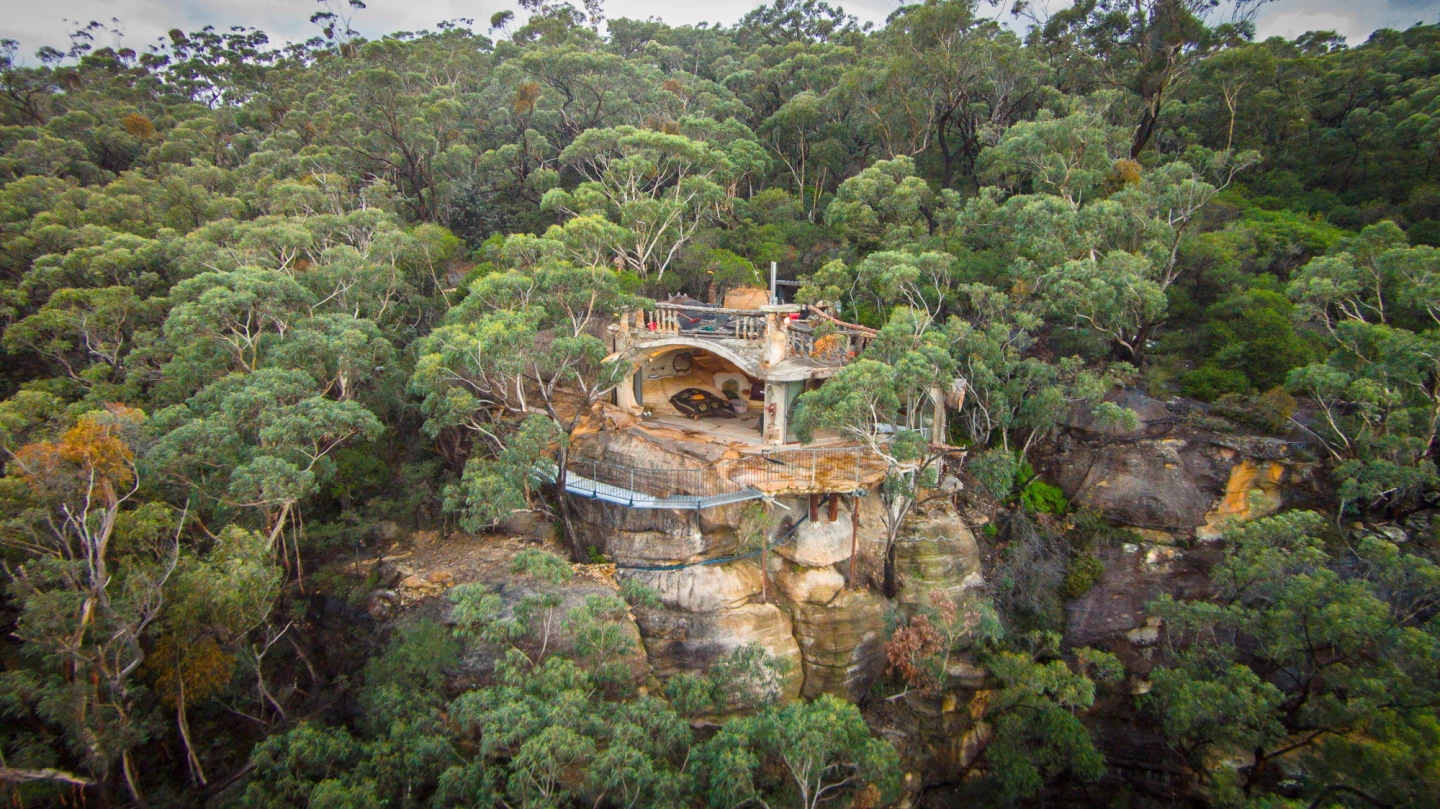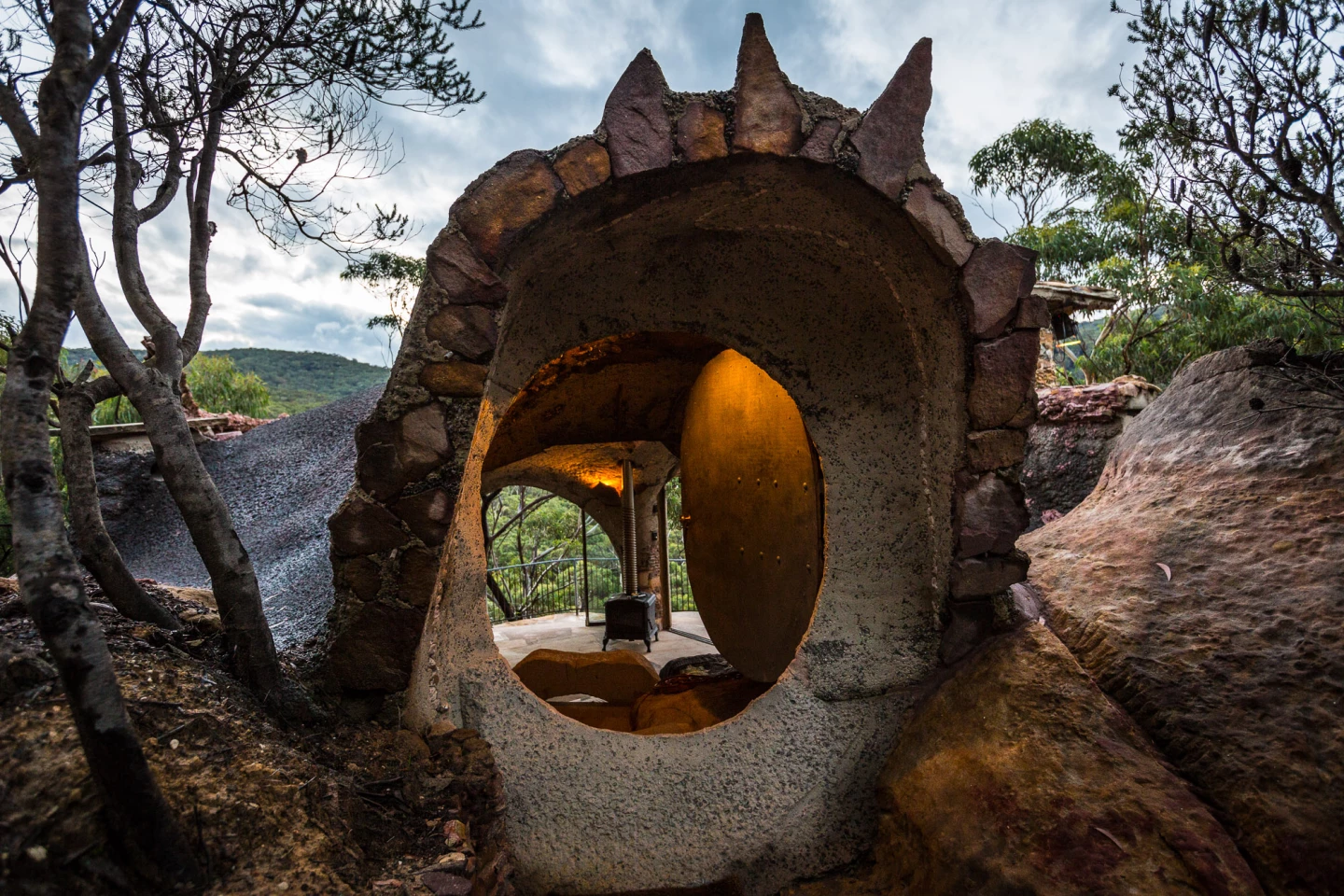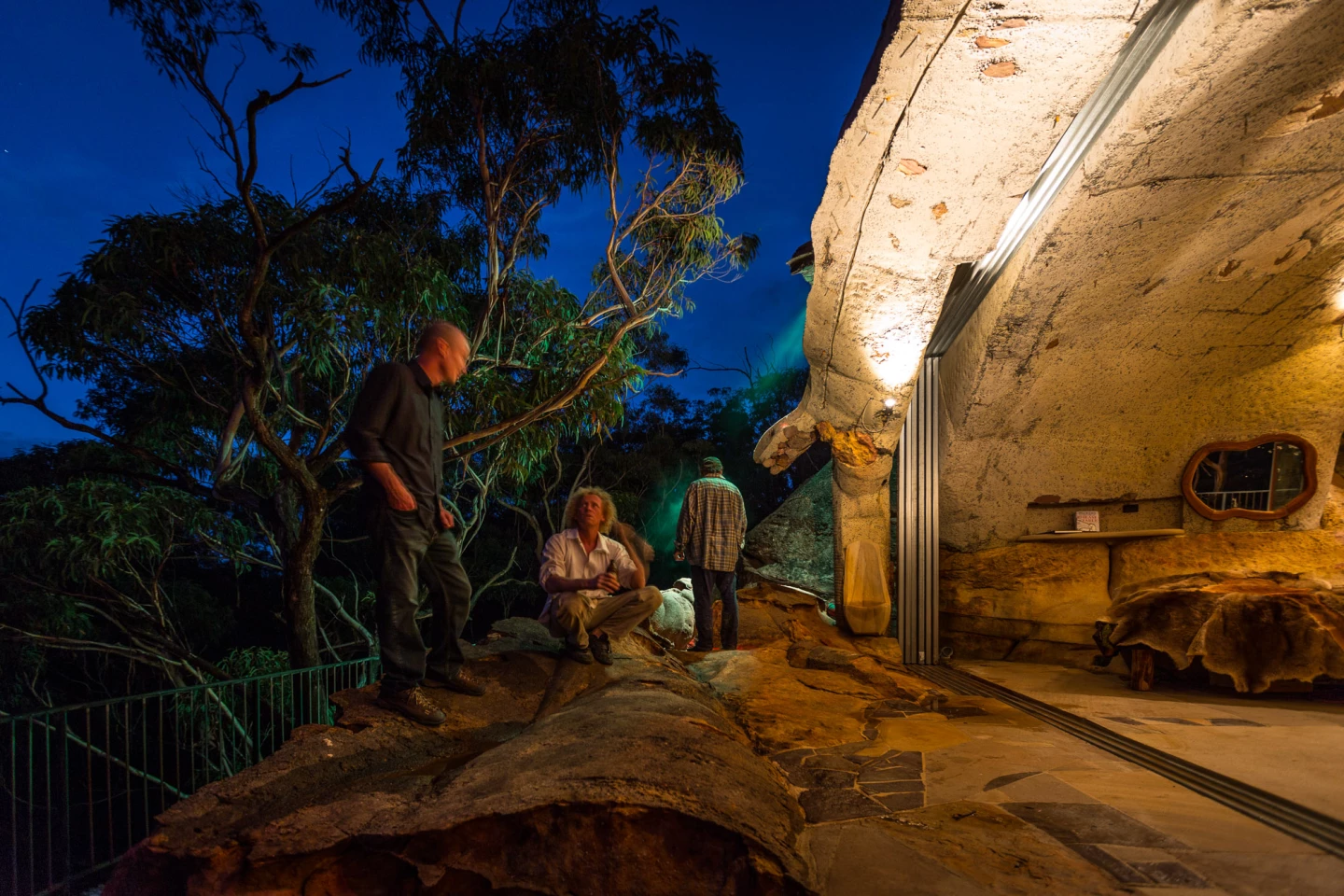Lionel Buckett squats barefoot on the stone outcropping that forms a natural verandah to his latest extraordinary creation. Weathered and weary with a shock of curly orange hair, he's looking out across a magnificent, pristine valley in Australia's Blue Mountains range, a view that probably hasn't changed in thousands, even hundreds of thousands of years. "It's an interesting thing with passive solar design," he muses, "that a cave facing north is probably the first passive solar building that humans ever lived in."
He'd know a thing or two about passive solar design. Buckett's company Australian Hardwood Homes was decades ahead of its time in terms of energy efficiency. "I had a company with up to about 15, 16 fellas working for about 25 years. We used to specialize in passive solar design, alternative energy systems, doing the right thing by the planet, all that sort of thing … Yeah, we won pretty well every energy award that you could for New South Wales over five or six years, and the boys in the company were master builder of the year probably 10 years ago now."

The business is long gone now, and Buckett has come into possession of the extraordinary piece of land we're now looking over – 600 acres of prime bushland that's been in his family since the 1950s.
"It's part of an original land grant from 1830 to a fella called Lt. Bowen. He came here and he had 17 convicts, and he made a road right down into that gorge, he built a dam and a water powered sawmill. The reason my father bought it was because in that rainforest was heaps of coachwood – highly valuable timber. It used to be a major industry here in the 40s and 50s for furniture. There's still heaps of it there, it's probably worth more than what the property's worth."
Rather than logging it, Buckett has decided to use the land as a canvas for his own creativity, creating a series of eco-friendly holiday cabins that showcase his imagination as well as his exceptional tradesmanship. Starting out as a carpenter, he began building his first house at 17 before qualifying as a bricklayer and builder. The woodwork in the cabins is exquisite, which makes it all the more remarkable that his latest creation uses almost no wood at all.


The cllifftop cave is a concrete and steel construction that's been built onto a natural rock platform. Opening a small, round wooden door that wouldn't be out of place in Hobbiton, you step through onto a neat little landing featuring a sandstone kitchen.
Moving down a short set of stairs brings you into the main living space, with a wood space heater, a bed covered with kangaroo skins, and a hidden TV cabinet with a sliding stone door – "there'll be a TV in there," Lionel grins, "…probably." A copper pipe winds around the heater's exhaust flue, capturing waste heat and using it to heat water on its way up to a tank on the roof.
Large, double-glazed glass doors can roll out to seal the cave off in bad weather, but Lionel prefers to retract them right out of view – they make the place look like some yuppie Sydney Harbor mansion, he reckons, and the experience of the cave is all about connecting with the outside world rather than shutting it out.

The bathroom, complete with hand-carved stone basin and a one-piece ironstone toilet seat over a long-drop composting "dunny," is set off to the side. But if you're feeling particularly at one with nature, you can use the shower on the outside wall and enjoy a rare blend of total exposure and total privacy looking out across the stunning valley.
The cave's interior is dotted with carvings that reflect the history of the settlement of the land. "We've done the story of the property," says Buckett, "maybe it's a little bit the story of Australia. So there's the ship coming, the tall sail ship. That's white man's arrival, and the next figure is the first settler on the property, Lt. Bowen. The next figure is Billy Cotee, an aboriginal fellow that he became friends with on this property back in 1830. Those two used to have lunch together and get about together because the Lieutenant liked the company of the aboriginal fella better than he liked the company of the convicts and the soldiers, according to his diary. And the aboriginal gave him presents of baby platypuses, so they're in the roof here. We've stuck a mother platypus in too.

"Every now and then I'll go bushwalking on this property and look for spots and think about what would be a nice thing to build in a particularly good spot. Every now and then I find a particularly amazing view. This spot … I would've walked past it for 5 years probably. One day I went off into the bush and I climbed back up this cliff face and came out on this rock face here, and thought 'wow, amazing, what beautiful thing could be made here.'
"It takes me a long time, because I actually get a bit disturbed that I'm changing what's originally here. That'll slow me down, because I don't want to change or destroy what originally attracted me to the area."

A cave cabin could easily descend into Flinstone-style farce, but Buckett and his team have done a good job keeping it honest and cosy. The bush itself takes center stage at all times, revealing several different characters as day turns to night and misty cloud boils and flows through the valley. The sky's so clear at night you can see the colors of the Milky Way. Watching a storm roll in across the mountains is a jaw-dropping experience, Lionel tells us, and the cave's glass doors give you a warm, dry, front row seat.

Visitors wanting to spend some time in the cave have a while to wait yet. Lionel tends to get attached to each building as he makes it. But once a few of his favorite regular guests have "buttered him up" and convinced him to let them stay there, it'll likely go up on the Blue Mountains Cabins website as a holiday option for others. When it does, it deserves to be a hit.
Enjoy a full tour of the spectacular cave cabin in out photo gallery.












































